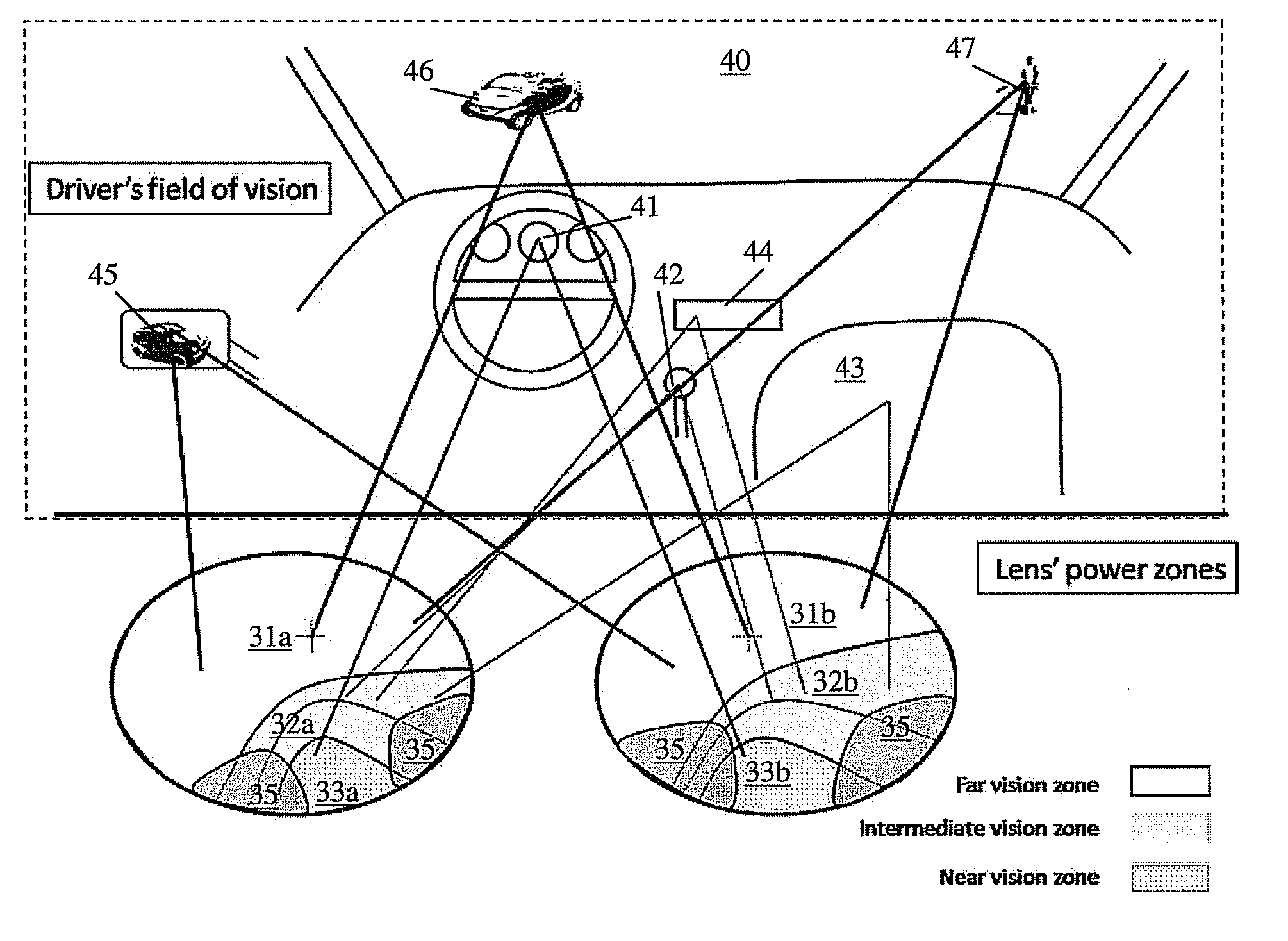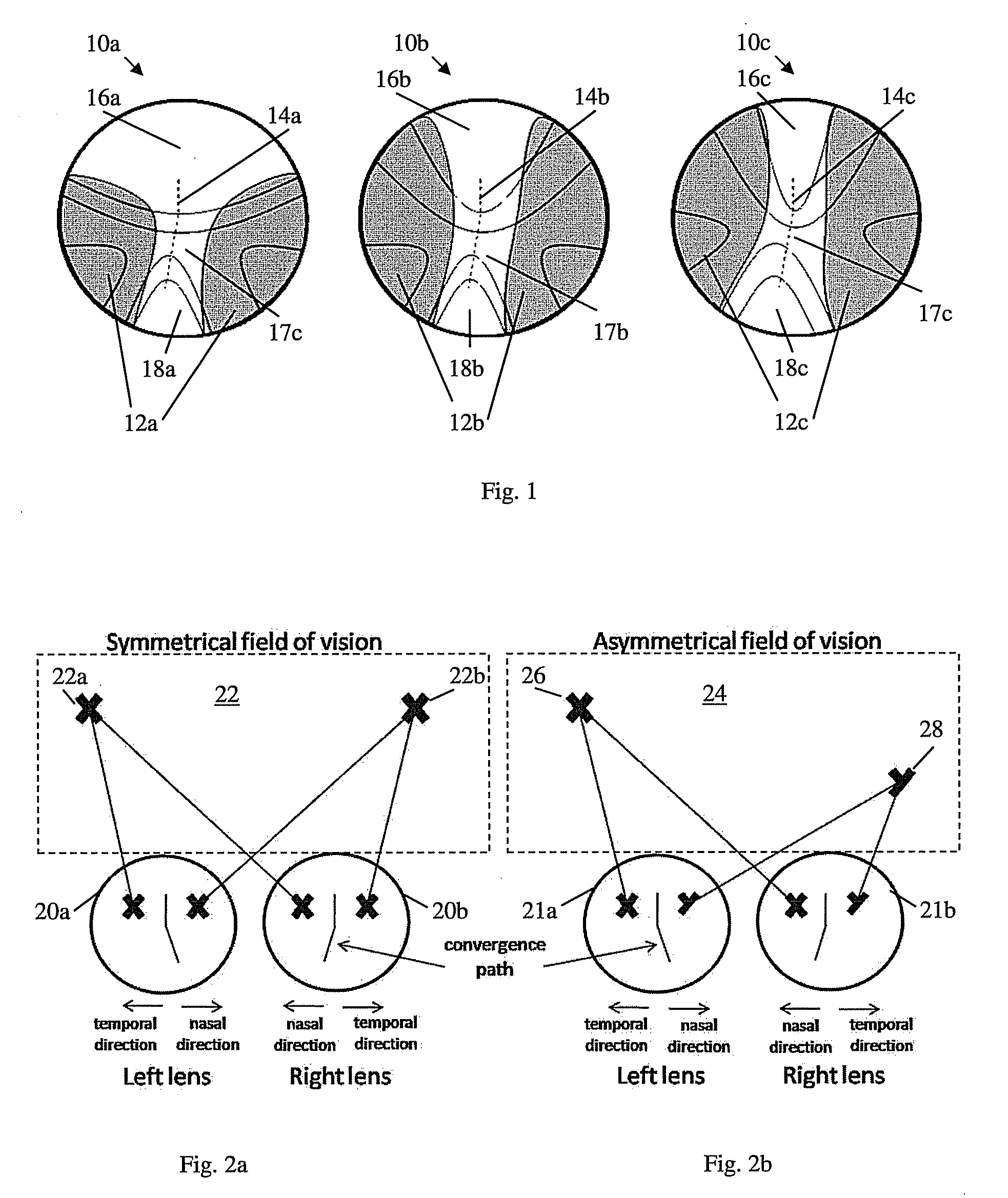Assymetrical progressive lens
a progressive lens and assymetric technology, applied in the field of assymetrical progressive lenses, can solve the problems of limiting the wearer's horizontal natural eye movement, primarily vertical or almost vertical power distribution,
- Summary
- Abstract
- Description
- Claims
- Application Information
AI Technical Summary
Problems solved by technology
Method used
Image
Examples
Embodiment Construction
[0015]In the following detailed description, numerous specific details are set forth in order to provide a thorough understanding of the invention. However, it will be understood by those skilled in the art that the present invention may be practiced without these specific details. In other instances, well-known methods, procedures, and components have not been described in detail so as not to obscure the present invention.
[0016]Reference is now made to FIG. 1, which is a schematic illustration of conventional right lens power distribution designs 10a, 10b and 10c. Power distribution designs 10a, 10b and 10c include respective far vision power zones 16a, 16b and 16c, intermediate vision power zones 17a, 17b and 17c, and near vision power zones 18a, 18b and 18c. Far vision power zones 16a, 16b and 16c may be located at the upper portion of power distribution designs 10a, 10b and 10c, for example, because users of lens tend to raise their gaze when looking at far distances. Near visio...
PUM
 Login to View More
Login to View More Abstract
Description
Claims
Application Information
 Login to View More
Login to View More - R&D
- Intellectual Property
- Life Sciences
- Materials
- Tech Scout
- Unparalleled Data Quality
- Higher Quality Content
- 60% Fewer Hallucinations
Browse by: Latest US Patents, China's latest patents, Technical Efficacy Thesaurus, Application Domain, Technology Topic, Popular Technical Reports.
© 2025 PatSnap. All rights reserved.Legal|Privacy policy|Modern Slavery Act Transparency Statement|Sitemap|About US| Contact US: help@patsnap.com



